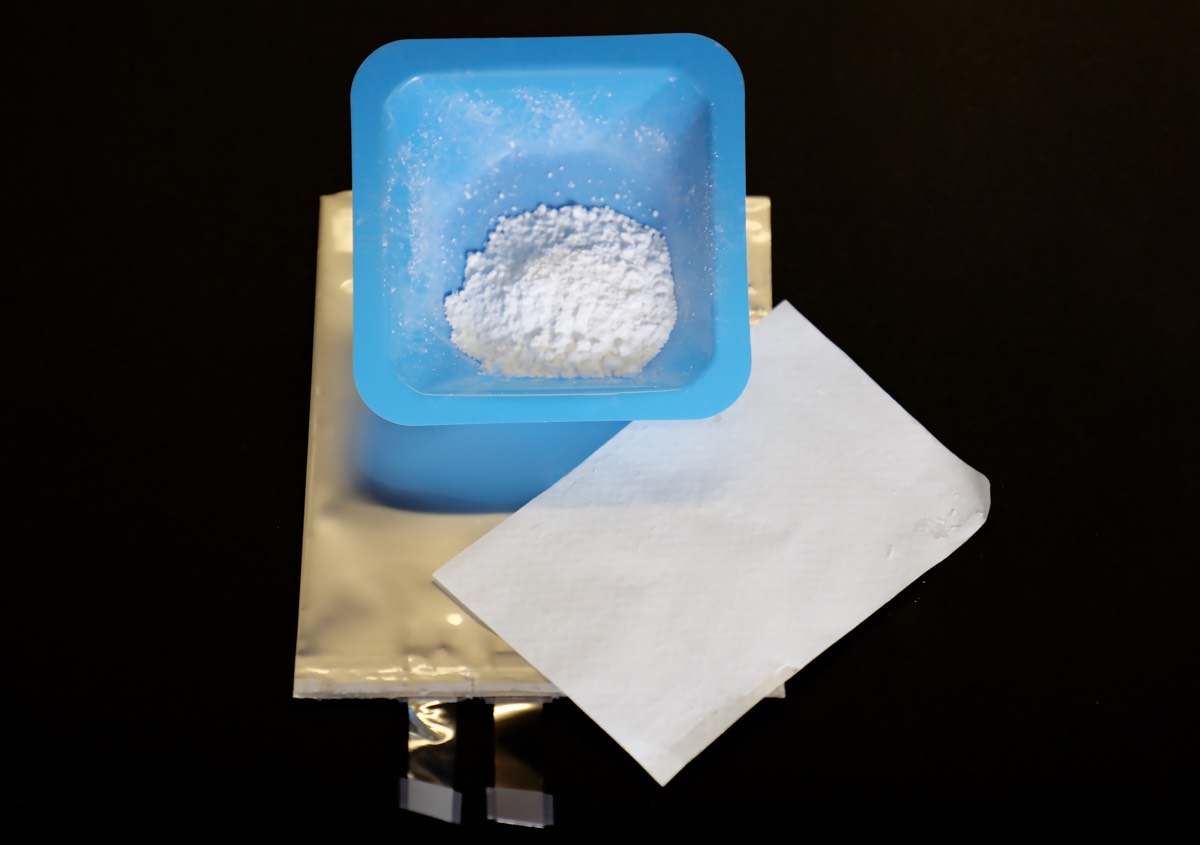Exploding lithium-ion batteries can wreak havoc on airline flights or in waste facilities after people toss their old electronics into the trash. Now, scientists at Oak Ridge National Laboratory (ORNL) have come up with a new chemical recipe that could combat the problem.
A lithium battery has two electrodes, separated by a thin plastic sheet and submerged in a liquid electrolyte—that's a chemical medium (usually a flammable lithium-ion fluid) that allows charge to flow between a lithium-ion cathode to a carbon anode. When that thin plastic sheet breaks (due to too much jostling in the cargo hold of an airplane, for instance), the electrodes can come together, shorting out the battery. This produces heat, which can ignite the liquid electrolyte, and boom! You have a small fire in the cargo hold.
That's why the FAA prohibits anything containing lithium-ion batteries in checked baggage. In 2017 alone, the agency reported 46 incidents of exploding batteries on airplanes.
Non-flammable solid electrolytes could solve the problem, but ORNL physicist Gabriel Veith says this would require a significant overhaul of the production process for lithium-ion batteries, a considerable capital investment that manufacturers might not wish to make. That's why he and his cohorts are researching ways to tweak the conventional electrolyte recipe.
Speaking at this week's meeting of the American Chemical Society in Boston, Veith said he found inspiration for a tweak while introducing his kids to a cornstarch and water mixture popularly known as "oobleck."
The nickname is a nod to Dr. Seuss' children's tale, Bartholomew and the Oobleck, in which a magic spell gone awry causes sticky green stuff to rain down from the sky. The real-world oobleck is an example of a non-Newtonian fluid. Isaac Newton's definition of an ideal liquid is one in which the viscosity (how much friction or resistance there is to flow) is primarily dependent on temperature and pressure. That is, water flows the same even if you apply a shearing force by stirring or mixing.


 Loading comments...
Loading comments...
